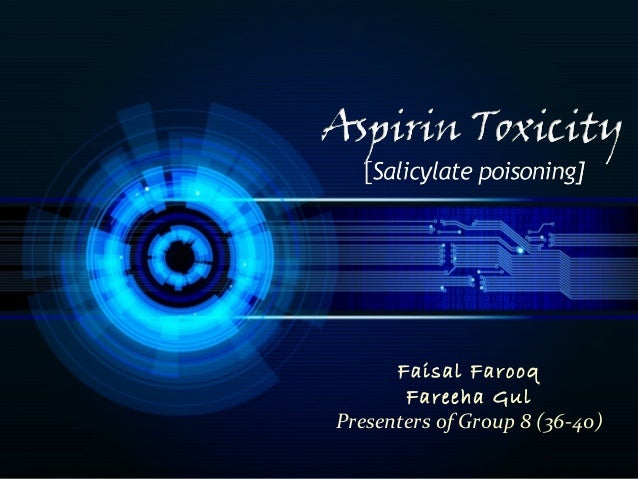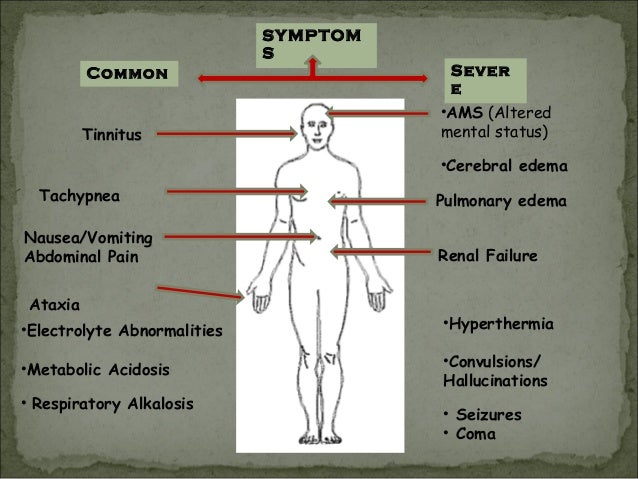

Bismuth subsalicylate antacid formulations and corticosteroids are contraindicated. Metoclopramide can be used to control vomiting. In the asymptomatic patient, gastric protectants should be continued for 5 - 7 days. Maintain hydration and start GI protectants (sucralfate, H2 blockers, ± misoprostol, ± omeprazole) to help manage and/or prevent gastric ulcers. Liver values, glucose, acid base status and electrolytes should be monitored. Peritoneal dialysis can be effective in removing salicylates. Decontamination of asymptomatic patients would include induction of emesis and administration of activated charcoal (repeat dosages with large exposures) and cathartic. The primary goal of treatment is to prevent or treat gastric ulceration, acidosis, hepatopathy, and coagulopathy. Renal insufficiency is uncommon with salicylate toxicoses but could develop secondary to rhabdomyolysis (from seizuring) or hypotension. Fever and seizures may be seen due to the uncoupling of oxidative phosphorylation.

Signs may include vomiting (± blood), hyperpnea, respiratory alkalosis, metabolic acidosis, gastric hemorrhage, centrilobular liver necrosis, and bleeding diathesis. Dosages of 325 mg twice a day were lethal to cats. In dogs, toxicosis has occurred at dosages of 100 - 300 mg/kg/day PO for 1 - 4 weeks. Elimination is also slower in neonates and geriatric animals. Feline dosages of 5-12 mg/kg have a half-life of 22 - 27 hours, while dosages of 25 mg/kg have a half-life of approximately 44 hours. Cats are deficient in glucuronyl transferase and have prolonged excretion of aspirin due to decreased metabolism. In dogs, the half-life at the therapeutic dosage is 8.6 hours.

The elimination half-life increases with the dosage. Aspirin is metabolized in the liver and excreted through the urine. Salicylates also impair platelet aggregation.Īspirin is rapidly absorbed from the stomach and proximal small intestines in monogastric animals. At very high dosages, aspirin and other salicylates uncouple oxidative phosphorylation, leading to decreased ATP production. Aspirin reduces pain and inflammation by reducing prostaglandin and thromboxane synthesis through inhibition of cyclooxygenase. Aspirin (acetylsalicylic acid, ASA) is available as tablets, capsules, powders, effervescent tablets and oral liquid preparations.


 0 kommentar(er)
0 kommentar(er)
